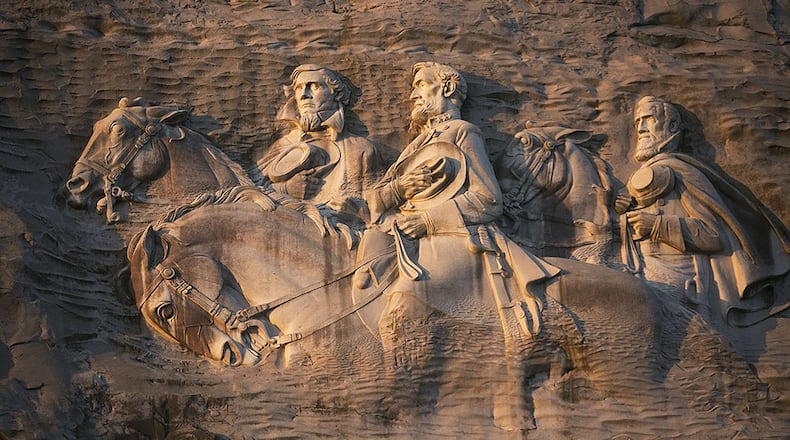From the archives: The story “Stone Mountain a leader in region tourism” was originally published in the Atlanta Journal-Constitution on June 12, 1986.
At 3,200 acres, Stone Mountain Park is, perhaps, too big to be called a park. But, then, the huge lump of granite from which it takes its name is too big to be called a rock.
The park, currently drawing guests at a rate of more than 5 million a year, is the second-most-visited tourist attraction in the Southeast. That's not surprising, in view of the fact that the mountain itself has been luring tourists since at least 1567 when Capt. Juan Pardo, leading a small detachment of the Spanish army, came upon what he called Crystal Mountain.
Pardo chose that name because the ground at the base of the mountain was littered with crystals of quartz, which Pardo mistook for diamonds, rubies and other precious gems.
Although the mountain and its environs were visited off and on over the years, it was not until the 1820s that permanent structures were erected there. Local entrepreneur Andrew Johnson built an inn near the mountain in 1825 and his friend and sometime business partner Aaron Cloud constructed another one a few years later.
It was Cloud who built the first "tourist attraction, " in the modern meaning of the term, at Stone Mountain. On the summit of the mountain, Cloud erected a wooden tower where, for 50 cents, a visitor could climb 300 steps to a viewing platform and view the surrounding countryside through a telescope.
The attractions at Stone Mountain Park today are a far cry from Cloud's tower. They span the technological spectrum from a primitive grist mill to an ultramodern display of laser artistry. In the same day, a visitor to the park can ride a train pulled by a steam locomotive, a paddle-wheel river boat and an electronically controlled cable car.
Sports-minded guests can go fishing, play golf or tennis, get in some batting practice or glide on the ice at an Olympic-sized skating rink. Car junkies can see some of the most interesting automobiles ever produced at the Antique Auto and Music Museum.
For hikers, there is a 1.3-mile trail up the west slope of the mountain to its summit and the eight-mile Stone Mountain Historical Trail that loops around the base of the mountain.
Civil War enthusiasts can amuse themselves in the Civil War Museum at Memorial Hall or go to Confederate Hall to see "The War in Georgia, " a light and sound show depicting Sherman's "March to the Sea."
The biggest Civil War-related attraction is the carving of Confederate President Jefferson Davis and the Confederacy's two most famous soldiers, Robert E. Lee and Thomas J. (Stonewall) Jackson on the north face of the mountain. Measuring 90 feet high by 190 feet wide, the carving is the largest sculpture in the world.
Anyone who likes water should be able to find more than enough to do, from boating and canoeing on the lake to lounging on one of two white- sand beaches to cavorting on the water flumes - the Rampage water coaster and the Hang-Ten glide ride.
Nature lovers can walk along the wildlife trails and see animals native to North America living in 20 acres of forest terrain. The wildlife trails include the Trader's Camp, a petting zoo with tame deer and goats, rabbits and baby bison.
People interested in the past can cross an old covered bridge, see a 19th-century grist mill or stroll on the grounds of an antebellum plantation.
The staff of Stone Mountain Park like to brag that the park has something for everyone. It is not an idle boast.
About the Author
Keep Reading
The Latest
Featured


